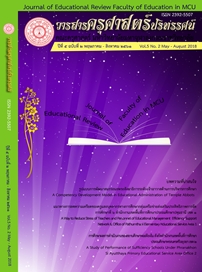Traditional Skills and Knowledge of the Tai People of NE India
Main Article Content
Abstract
Historically, the Northeastern part of India is, nowadays, the geographically inhabited location, where, long ago, the racial groups of Mongoloid people have settled down. So far as we know thoroughly, the Mongoloid were very rich of various language families such as the speakers of Indo-Chinese language belonged under Mon-Khmer family etc. The other groups of Indo-Chinese language such as Siamese-Chinese etc., were known and realized well, and especially, Shan was grouped and included in the earlier said Siamese-Chinese as well.
Primarily, the group of Shan or Tai people, according to the credible ethnic history, was found the existence in Yunnan. After that, they emigrated from the valley in the Southern part of Yunnan to the Shweli valley, where was located in the upper part of Burma in the sixth century. Afterwards, in the thirteenth century, the Tai Ahom minority people entered into Assam and then they, nowadays, still live in this state, where is located in the Northeastern part of India. The Tai Ahom people, as observed generally, have their severally subdivided groups namely; Shane state composed of Tai Khamti, Tai Phake, Tai Aiton, Tai Turung and Tai Khamyang. Their geographical evidences of the habitation, at the present time, can obviously be found in the administrative district of Dibrugarh and Sibsagar, state of Assam and beyond the administrative district of Lohit, state of Arunachal Pradesh
Article Details
ทัศนะและความคิดเห็นที่ปรากฏในบทความในวารสารฉบับนี้ถือเป็นความรับผิดชอบของผู้เขียนบทความนั้นเพียงผู้เดียว และไม่ถือเป็นทัศนะและความรับผิดชอบของกองบรรณาธิการ
กองบรรณาธิการขอสงวนสิทธิ์ในการคัดเลือกบทความลงตีพิมพ์และจะแจ้งให้เจ้าของบทความทราบหลังจากผู้ประเมินบทความตรวจอ่านบทความแล้ว
ต้นฉบับที่ได้รับการตีพิมพ์ในวารสารครุศาสตร์ปริทรรศน์ คณะครุศาสตร์ มหาวิทยาลัยมหาจุฬาลงกรณราชวิทยาลัย ถือเป็นกรรมสิทธิ์ของคณะครุศาสตร์ มหาวิทยาลัยมหาจุฬาลงกรณราชวิทยาลัย ห้ามนำข้อความทั้งหมดหรือบางส่วนไปพิมพ์ซ้ำ เว้นเสียแต่ว่าจะได้รับอนุญาตจากมหาวิทยาลัยฯ เป็นลายลักษณ์อักษร


